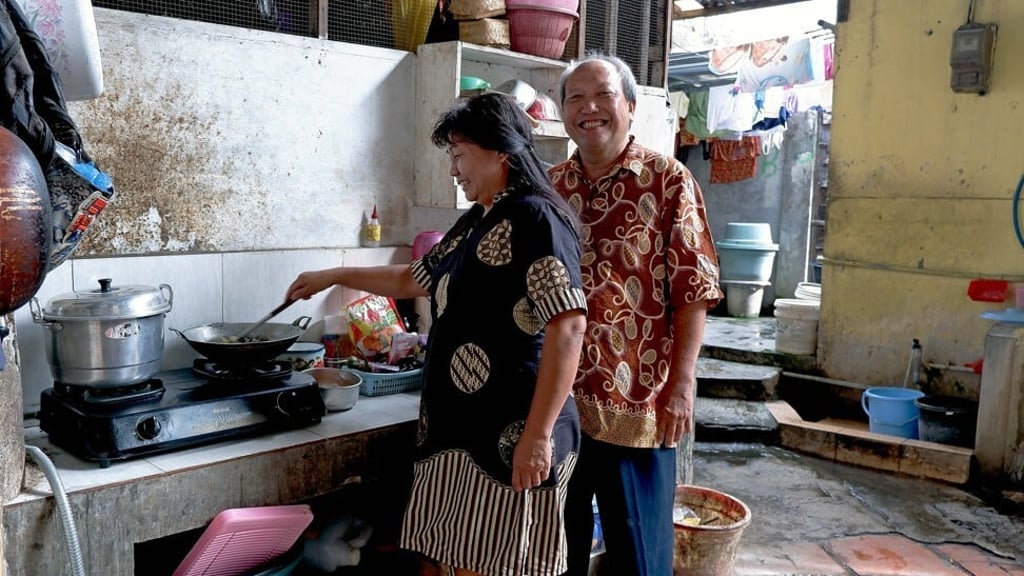‘Haunted’ mansion where a city’s poor live rent-free, and its benevolent Chinese-Indonesian guardian who calls them his siblings
- The mansion in Surabaya, Indonesia sheltered ethnic Chinese refugees in the 1940s. Now it’s home to a racial mix of families
- For some the decrepit and rat-infested building is a staging post to ‘a more decent life’ outside. To its ageing caretaker, looking after them is a moral duty

Sutikno Djiyanto is, like his father before him, the Chinese-Indonesian caretaker of a derelict, two-storey mansion in Indonesia’s second-largest city, Surabaya, that’s supposedly haunted.
Two centuries old and widely known as Gedung Setan – or Satan’s Building – because it was once surrounded by graveyards, the mansion sheltered refugees from a violent communist rebellion in 1948. Sutikno’s late father took refuge in the building that year, and Sutikno himself was born there in 1957. Long abandoned by its legal owner, the mansion is today home to about 150 poor residents from a variety of ethnic backgrounds.
Now 63, from a family with Hokkien roots in southern China, Sutikno is also known by his Chinese name, Djie Djwan Tek.
He takes care of the community in the building using a social approach. Sutikno charges each household a monthly fee of 15,000 rupiah (about US$1) to cover maintenance, property taxes and death benefits compensation, and a monthly fee per person of 5,000 rupiah for use of baths, wash basins and toilets. None of the tenants pays formal rent for what he describes as “very cheap housing”.

Sutikno says the building is not haunted, but it’s hard to dispel widely held beliefs. He says there is moral pressure on him to carry on caring for the mansion and its residents, because he was given a mandate to do so. “They are my siblings under one roof, so I have to treat them wisely,” he says. “I cannot do whatever I wish.”
